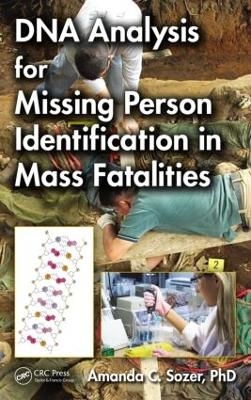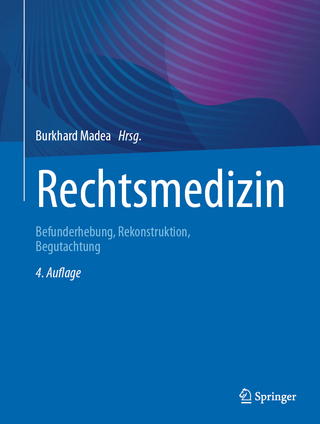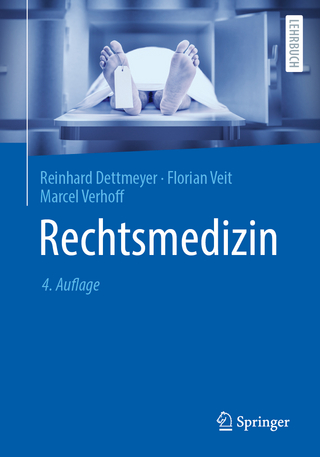
DNA Analysis for Missing Person Identification in Mass Fatalities
Crc Press Inc (Verlag)
978-1-4665-1384-6 (ISBN)
- Titel z.Zt. nicht lieferbar
- Versandkostenfrei innerhalb Deutschlands
- Auch auf Rechnung
- Verfügbarkeit in der Filiale vor Ort prüfen
- Artikel merken
Mass fatality response operations, including body recovery, mortuary operations, family assistance, the identification of human remains, and psychosocial support for families
Best practices in DNA sample collection and the different types of reference samples that can be used to identify a reported missing (RM) individual
Autosomal short tandem repeat (STR) DNA profile analysis and interpretation, and procedures to ensure data accuracy
Major steps involved in generating a DNA profile and the complex aspects of data analysis and interpretation
The importance of data management using information technology tools, and tips for maintaining quality operations
Accreditation and standards and the major elements of a DNA quality program
Setting up a laboratory operation, including planning, staffing, identifying types of equipment and supplies, and the procedures for ensuring that laboratory equipment performs appropriately
The book includes a discussion of the key steps in the preparation, delivery, and evaluation of training sessions for personnel responding to a mass fatality human identification event. It also provides a comprehensive vocabulary list with terms related to mass fatality DNA identification. This text is a must-read for organizations contemplating the use of DNA in human identification initiatives following mass fatalities. It is also a tremendous value to emergency manager/planners, medical legal authorities, and forensic DNA laboratories.
Amanda Sozer, Ph.D., president of SNA International, received her B.A. from Rutgers University and her Ph.D. from the University of Tennessee–Oak Ridge Graduate School of Biomedical Sciences at Oak Ridge National Laboratory. Dr. Sozer has worked in forensics for over 20 years directing forensic laboratories and programs. In addition to directing forensic DNA laboratories, she served as a technical contractor to the U.S. National Institute of Justice (NIJ) and worked on the DNA backlog reduction programs for no-suspect forensic cases and convicted offender outsourcing programs, which resulted in the processing of millions of samples. She has worked on numerous local, state, and federal forensic projects within the United States and forensic projects and human identification initiatives in Guatemala, Cyprus, Iraq, Afghanistan, Jordan, Dominican Republic, Colombia, Lebanon, the Philippines, and Libya.
Human Identification through DNA Analysis. Mass Fatalities. Post-Mortem Functions—Body Recovery and Morgue Operations. Ante-Mortem Functions—Family Assistance Operations. Identification of Remains. Identification and Collection of Biological Samples from Human Remains. Identification and Collection of DNA Reference Samples. Application of DNA Technology for Human Identification. DNA Profile Analysis and Interpretation. DNA Sample, Case, and Data Tracking Using Information Technology Tools. Implementing and Maintaining a Quality DNA Program. Laboratory Development. Delivering Effective Training. Terminology. Index.
| Zusatzinfo | 38 Tables, black and white; 87 Illustrations, black and white |
|---|---|
| Verlagsort | Bosa Roca |
| Sprache | englisch |
| Maße | 156 x 234 mm |
| Gewicht | 770 g |
| Themenwelt | Studium ► 2. Studienabschnitt (Klinik) ► Rechtsmedizin |
| Naturwissenschaften ► Biologie | |
| Recht / Steuern ► EU / Internationales Recht | |
| Recht / Steuern ► Strafrecht ► Kriminologie | |
| Sozialwissenschaften ► Soziologie | |
| ISBN-10 | 1-4665-1384-5 / 1466513845 |
| ISBN-13 | 978-1-4665-1384-6 / 9781466513846 |
| Zustand | Neuware |
| Haben Sie eine Frage zum Produkt? |
aus dem Bereich


